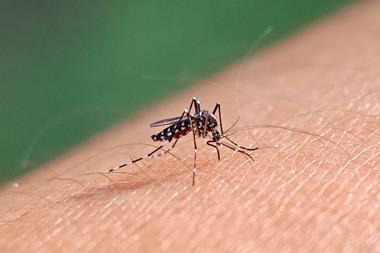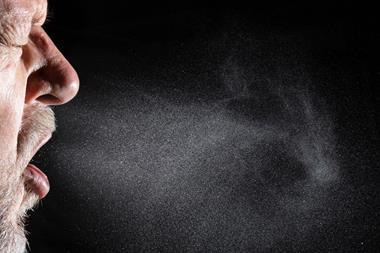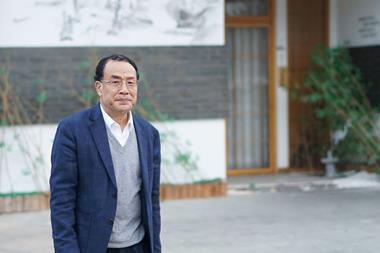The Covid Moonshot experiment

It began with a tweet.
On 9 March 2020, myself and my co-founders Matthew Robinson and Aaron Morris were living out of an Airbnb in Silicon Valley. We were starting PostEra, an AI-driven biotech. The tweet came from Martin Walsh, a scientist from Diamond Light Source in Oxfordshire, UK. His team solved the crystal structure of the Sars-CoV-2 main protease, a key viral protein, with many small molecule fragments bound to the active site. Each of these fragments are weak binders, but we thought our AI algorithms could build potent antivirals by merging them. But we also wanted to also tap into the community of scientists around the world.
We launched Covid Moonshot, also via a tweet.
We asked the scientific community to design compounds based on merging fragments and submit them to our online crowdsourcing portal. We also made a commitment that all data and structures will be released real-time to immediately benefit the antiviral community: open science without staking any IP claims.
We thought this crowdsourcing endeavour might be of niche interest. However, thousands of submissions were submitted in the first week – a lot of them by scientists in the pharma industry who were eager to help.
With many designs, the question became how to prioritise and synthesise them. That’s where AI became useful. We used PostEra’s AI to rapidly design synthetic routes based on our contract research organisation partners’ inventories, and prioritised compounds that can be made rapidly while covering the chemical space spanned by the fragments. This began a rapid iterative medicinal chemistry process of designing, making and testing compounds.
At later stages of the program, AI algorithms were used to design compounds that balance the multitude of (often competing) properties that a drug candidate needs to have. Algorithms also helped design strategies that used high throughput chemistry to rapidly scan chemical space, and the fast turnaround in structural biology allowed models to infer protein-ligand interactions specific to the main protease.
Open science is a rising tide that lifts all boats
This collaboration between AI and open innovation led to rapid progress. Within 18 months, we identified a preclinical candidate which has reached the stage of drug development where the candidate is rigorously profiled before human clinical evaluation. Independent from our effort, scientists from the pharmaceutical company Shionogi referenced our data as a starting point for their discovery of ensitrelvir, which was approved in Japan for Covid treatment. Open science is a rising tide that lifts all boats.
On the back of Moonshot’s progress, we received funding to establish the AI-Driven Structure Antiviral Platform (ASAP). ASAP will target viral families with pandemic potential. In addition to coronavirus, it will also address flaviviruses, responsible for large endemic diseases such as dengue and Zika, and picornaviruses, responsible for devastating diseases such as polio. (To get involved, see asapdiscovery.org for open opportunities!)
So what have we learnt from Moonshot and ASAP?
First, the power of open innovation. A competitive market-focused biopharma sector is the driver of many life-saving innovations. However, there’s space for more open science approaches to drug discovery, especially for cases with no immediate economic return (such as pandemic preparedness and neglected tropical diseases).
The lingering question is where funding for drug development and clinical studies comes from. The focus should be on creating product development organisations for pandemic preparedness with the capacity to execute clinical trials, be the marketing authorisation holder for eventual therapeutics, and deploy those medicines equitably during a pandemic. We should learn from successful non-profits such as Drugs for Neglected Diseases Initiatives and Medicines for Malaria Ventures, which developed multiple therapeutics in partnership with biopharma. Their approach could be adapted to pandemic preparedness, with the goal of pre-emptively developing antivirals for future pathogens.
Second, the importance of building an arsenal of chemical starting points against viruses of pandemic concern. We hosted an antiviral discovery roundtable last year, which identified the dire lack of quality starting points for novel antiviral targets as a key pain point. As the genome of RNA viruses is relatively small (Sars-CoV-2 encodes just 29 proteins, for example), comprehensively finding inhibitors for proteins in viruses of pandemic concern is a tractable challenge for the community.
Third, the potential for AI to spearhead drug discovery by augmenting the work of researchers. We harnessed the collective creativity of scientists via crowdsourcing, but prioritised these designs with AI. This produced demonstrable speedups in going from fragments to leads, and from leads to candidates. Beyond non-profit efforts, we have applied AI to industrial drug discovery too: PostEra has raised over $26 million of venture capital funding, and signed $1bn of drug discovery collaborations with partners like Pfizer and Amgen.
On a personal note, it has been a privilege to help non-profit open science drug discovery efforts as a scientist and an entrepreneur. I believe open innovation and AI are key force multipliers that may help realise a pandemic-free future.












No comments yet